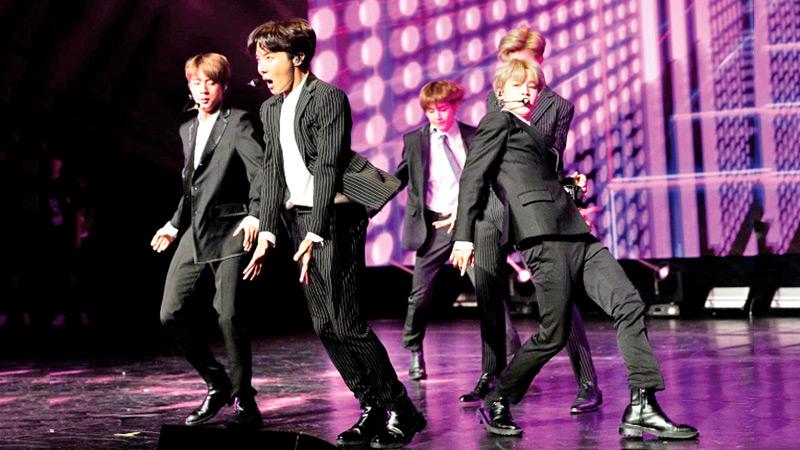
CS Mani, a 67-year-old Indian, isn’t someone you’d expect to become enthralled by a South Korean limited television series. But as he watched the finale of Crash Landing on You in his apartment in Mumbai, he couldn’t hold back his tears.
 “Didn’t you cry in the end? Episode 16? I cried rivers,” he told Al Jazeera, recalling the sweet-sad love story of a South Korean heiress and a North Korean army captain.
“Didn’t you cry in the end? Episode 16? I cried rivers,” he told Al Jazeera, recalling the sweet-sad love story of a South Korean heiress and a North Korean army captain.
“My wife thinks I’m mad,” Mani added.
Mani is not mad. He’s just caught in the whirl of hallyu — the Korean wave, or South Korea’s pop-culture blitzkrieg. Considered something like Trojan horses for their growing soft power, South Korean cultural and pop culture exports have taken India by storm since the country went into one of the world’s strictest coronavirus lockdowns last year.
Online entertainment
Isolated and rendered listless by the fear of Covid-19, many Indians turned to online entertainment and fell in love with K-dramas.
For most, the affair began with one of the 500 Korean offerings available on Netflix: Descendants of the Sun, Boys Over Flowers, Reply 1988, Kingdom, Sky Castle.
That budding romance blossomed for many into a fondness for all things Korean: the food the stars ate, the clothes and jewellery they wore, the soju (Korean alcoholic beverage) they drank, the language they spoke and the beauty products they used.
Demand for many of these products shot up in India, spurring Indian companies to invest more in acquiring and marketing them.
In 2020, South Korean noodle brand Nongshim alone recorded sales of $1m. So far in 2021, Indians have consumed 178 percent more Korean instant noodles, ramyun, than they did in 2020, according to market research firm Euromonitor International.
Interest in Korean language classes also accelerated.
“Earlier when people used to take language courses it was linked with employability,” Rathi Jafer, who heads the Indo-Korean Cultural and Information Centre in the southern Indian state of Tamil Nadu, told Al Jazeera. “Now we have people learning the language because they want to understand what their icons are saying; what the singers are singing. They want to have a direct connect with Korea through the language.”
Korean dramas exported to India tend to be well directed, have high production values and offer plots that conjure up worlds where the concerns are familial, familiar and mundane.
That universal appeal is by design, said a professor at Yonsei Business School in Seoul, Dae Ryun Chang. He told Al Jazeera that while the language, setting and characters of K-dramas are distinctly Korean, the way they are crafted is “actually multinational” and “meant to be palatable to international audiences”.
Senior vice-president at Kross Pictures, a South Korean multinational production company that remakes Korean films in India, Subramaniam, told Al Jazeera that K-dramas’ appeal lies in their “emotional stickiness”.
Some newly-converted K-drama fans who spoke to Al Jazeera cited the coronavirus pandemic grief as the catalyst for their newfound interest in K-drama, saying they could no longer relate to American shows about spies and military operatives taking out enemies, or to cold, dysfunctional Scandinavian detectives hovering over dead bodies and chasing serial killers.
In a phone interview, one fan said, “No matter what stressful situation I may be going through, Korean dramas make me laugh.”
For Indians used to Bollywood masala and melodrama, K-dramas have it all: songs, a Mills and Boon romance often conducted in foreign locations, some light humour and all the tropes for which Indian commercial cinema is famous. There are love triangles, kidnappings, sudden bouts of amnesia, stern mothers, revenge for family honour and the biggest connection of all — living next door to a separated-at-birth brother/enemy nation.
“There is a kind of appeal of South Korean culture, a kind of familiarity with all the aspects of South Korean culture which is what has made them [K-dramas] such a hit,” India’s Ambassador to South Korea, Sripriya Ranganathan, told Al Jazeera.
Criminal lengths
Consider the K-drama Sky Castle, where mothers and fathers go to extreme, often criminal lengths to make sure their children excel in education. “They [Koreans] are very focused on education, totally in tune with how we are in India. Anything is OK if it’s for the children’s education. No cost is too much,” Ranganathan added.
With Indians binge-watching K-dramas, Netflix recorded a massive spike of 370 percent in viewership of K-dramas in 2020 over 2019, according to Euromonitor. Soon others, too, jumped in. India’s Zee Group-owned satellite service provider Dish TV launched a daily package for Rs 1.3 (less than 2 cents) where customers could access Korean dramas dubbed in Hindi. Popular streaming platform MX Player offered K-dramas dubbed in Hindi and two regional languages, Tamil and Telugu.
While neither the Korean producers nor the streaming platforms were targeting 60-something senior citizens, Mani has been drawn into the cozy, heartwarming world of K-dramas and has binge-watched more than 70.
